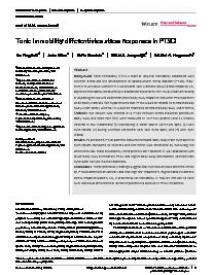Tonic immobility differentiates stress responses in PTSD
Abstract
Background: Tonic immobility (TI) is a state of physical immobility associated with extreme stress and the development of posttraumatic stress disorder (PTSD). However, it is unknown whether TI is associated with a distinct actual stress response, i.e., objective immobility measured by a stabilometric platform. This study made a first step in exploring this as well as differences in body sway responses between PTSD patients and healthy controls. We hypothesized that PTSD would be related to increased body sway under stress, whereas TI would be related to decreased body sway under stress.
Methods: Eye closure was selected as a PTSD-relevant stress induction procedure. Body sway and heart rate (HR) were measured in 12 PTSD patients and 12 healthy controls in four conditions: (1) maintaining a stable stance with eyes open, (2) with eyes closed, (3) during a mental arithmetic task with eyes open, and (4) with eyes closed.
Results: As predicted, PTSD patients showed increased body sway from eyes open to eyes closed compared to controls and this effect was eliminated by executing the arithmetic task. Most importantly, retrospective self-reported TI was associated with lower body sway increases in PTSD and higher body sway decreases in controls from eyes-open to eyes-closed conditions.
Conclusions: These preliminary findings suggest that eye closure has a different effect on PTSD patients than controls and that high self-reported TI might indicate a distinct stress response pattern, i.e., a proneness for immobility. It may be relevant to take such individual differences in stress-response into account in PTSD treatment.
In: Brain and behaviour, ISSN 2162-3279 | 6 | 11 | november | e00546
http://doi.org/10.1002/brb3.546


